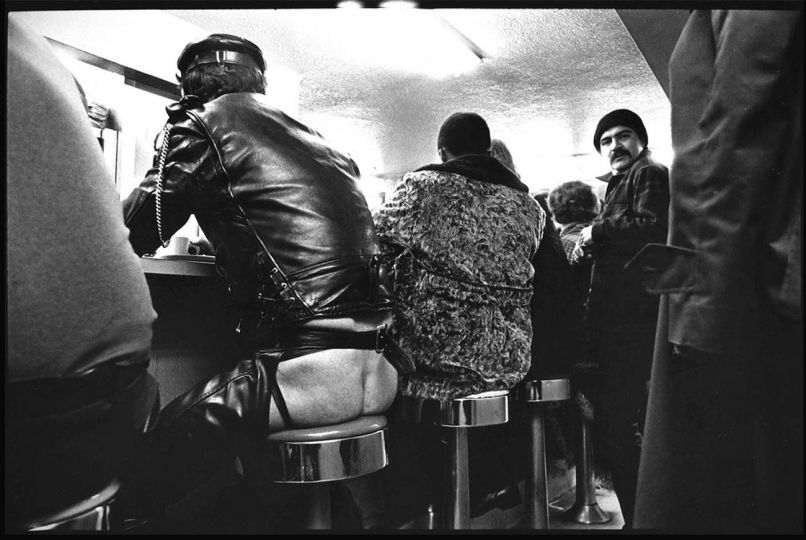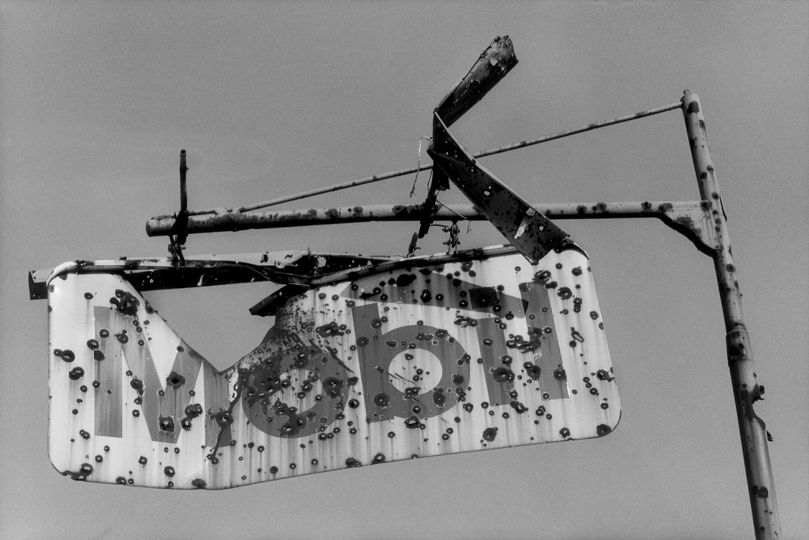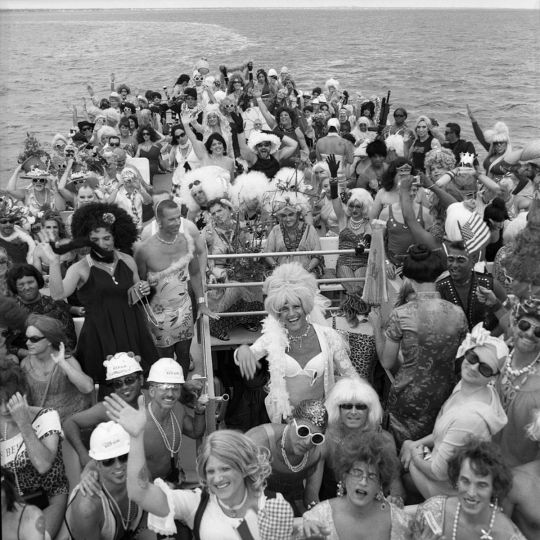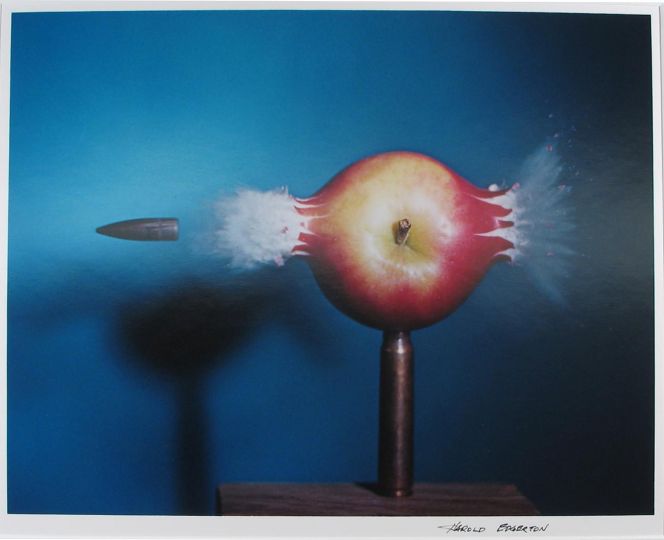Landscapes and city views were alongside portraiture and still life the first genres to be established in photography. The exhibition Land/City/Real/Imagined explores the two genres from the 1930’s onwards, from black and white photography through to digitally manipulated imagery.
The exhibition is divided into two sections, Land and City.
Highlights in the Land section include.
A series of extraordinary NASA collages. Surveyor Missions began to photograph the surface of the moon in June 1966 and continued for two years. In all, there were seven missions with five successful moon landings. Produced to scan the terrain on the Moon for the manned Apollo landing in 1969, these images were taken with Hasselblad cameras (they’re still up there). The images were then transmitted back to earth and intricately placed according to schematic plans. Each collage consists of a sheet of paper with text and diagrams and a series of numbered photographs, forming an image of a part of the surface of the moon. Each collage is comprised of approximately 20 to 100 two-inch square black and white photographs which have been stapled to sheets of U.S. Geological Survey cartographic paper. The moon landings were surrounded by a feeling of great optimism. Indeed, it was thought that soon everybody would be able to travel to the moon, as easy as booking a holiday in Spain.
Jonathan Olley, whose images from Castles of Ulster were included in the Exposed exhibition at Tate Modern last year, is represented by an image from his ongoing project The Forbidden Forest. The project is focused on the former WW I battle of Verdun. Almost 100 years later, vast quantities of live ammunition render the land unusable. Untouched and overgrown, the polluted and dangerous hills now resemble a wild and enchanted forest. The area, known as Zone Rouge, is completely closed off to the public. There is ongoing work to clear the forest of the shells. At the going rate it is going to take 900 years to clear it. The shells are extremely dangerous to handle and the teams of bomb disposal units lose a man a month due to explosions.
Dutch-born artist Tessa Verder began her career in Haarlem, the centre of the country’s rich painting tradition. There, she was captured by the idea that although times have changed, there is still a strong connection between today’s reality and the way reality was depicted in paintings from the past. This led her to create works where she combined her own photographs with realistic master paintings. To create work that was reflecting more emotion than just reality, Gradually she began to lean more and more towards the German tradition of Romanticism which in turn led to her moving to Berlin. In the Romantic painting tradition Verder recognizes the quest for the ultimate
- the ultimate where emotions are the guiding principle. A painter should not only paint what he sees before him, but also what he sees within him, as Caspar David Friedrich said. Similar to the Romantic painters, Verder travels a lot to find her ultimate subjects. She uses models and landscapes to create a world in itself deploys
mixture of contemporary techniques.
In her current series, The Day the World Whispered Verder is combining photographs of different elements of nature – a deserted steppe with skies or with a certain illumination angles from other continents – with parts of master paintings.
Alienation is a recurring theme in the work of British artist Holden, now based in Amsterdam, the result being adopted as a child and feeling out of place within her adopted family. Holden’s photographic compositions combine very different types of historical, cultural and personal imagery, as well as analogue and digital techniques. Attempting to unite an individual and group history, the body and nature, knowing and unknowing, much of the work is about bringing very different aspects into alignment. In Twilight, a naked female figure (Holden herself) steps into a fantastical landscape, exotic, beautiful but with unknown dangers within.
Highlights in the City section
The Argentinian photographer Horacio Coppola illustrated several books by his friend Jorge Luis Borges. Included is a rare oversize print, a dramatic architectural view of a modernist building in Buenos Aires, taken in 1931. Its title, Mediananera con Aire-Luz, is a reference to a popular Tango A Media Luz as well as the standard way estate agents described light and airy apartments.
Berenice Abbott’s Irving Trust Building, 1 Wall Street was taken on the 15th of February, 1938. Abbott had returned from Paris in 1929, intending to stay for a week. Instead she was seized by a fantastic passion, to photograph New York City, a passion she pursued against great odds for the next decade. Her image of the Irving Trust Building resembles a towering Gothic cathedral and it’s easy to why the city inspired the German film director Fritz Lang to embark on his film Metropolis.
British photographer George Rodger, co-founder of Magnum, is best known for his images of the Second World War and Africa. In 1950 he carried out a project about The Empire State Building. Included in the exhibition is an image Rodger took on the 102nd floor. One can’t see the faces in the crowd in front of him, merely their dark silhouette. And yet the image conveys their excitement, suggesting that this was their first visit to a big city.
Another British photographer, Marcus Doyle, spent several years of the last decade travelling across the USA taking photographs. Doyle never intentionally visited Las Vegas but rather found himself stopping off en route to Death Valley. His image of the Las Vegas skyline, taken through curtains in the Mirage Hotel, is not only startlingly beautiful. It’s also a hyper-real photograph of a city that is in itself hyper-real.
In Emily Allchurch’s light box work Urban Chiaroscuro No.3 (After Piranesi), the city has become both frightening and monstrous. The work is based on one of the etchings from Piranesi’s famous Imaginary Prisons. The etchings were in black and white. Allchurch’s versions are in colour. The source images for the light box work, a composite of several hundred images, were taken in Rome. The final image not only references the past but also comments on the contemporary city, with its graffiti, warning signs and CCTV.
Surveillance is also a concern in Colombian-born, now London-based photographer Manuel Vazques’ project Traces. The exhibition includes two works from the project, a framed photograph and a video installation. In a society full of prying eyes, everyone can become both spectator and actor in the quotidian spectacle. With CCTV cameras scattered in every public space our dwelling leaves traces behind, stored as visual codes. Choreographed crowds transit the nameless global city in their daily commuting where self-absorbed pedestrians experience the paradox of public space; between anonymity and scrutiny. Non-places are where this paradox turns explicit and evident and it is here where this project was undertaken with the intention of constructing imaginary urban landscapes that comment on our exposure to city life.
Vazques chose to carry out the project in Atocha train station in Madrid, scene of the 2004 terrorist attacks.
Gilles Decamps
Exhibition dates 25 August – 1 October 2011
Curated by Michael Diemar
Featuring photographs by
Berenice Abbott, Emily Allchurch, Horacio Coppola, Lisa Holden, NASA, Jonathan Olley, George Rodger, Manuel Vazquez, Tessa Verder and others.
Diemar/Noble Photography
66/67 Wells Street,
London
W1P 3PY
Telephone 0207 636 5375
















